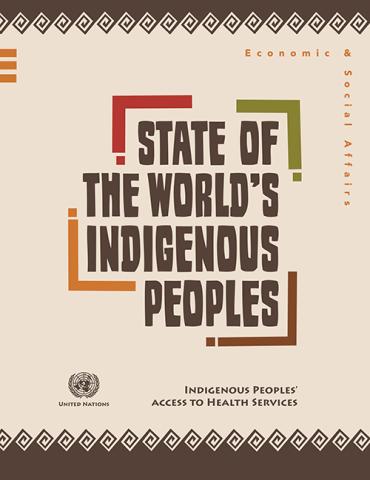
Show or Sort:

State of the World's Indigenous Peoples
Indigenous Peoples' Access to Health Services
This publication sets out to examine the major challenges for indigenous peoples to obtain adequate access to and utilization of quality health care services. It provides an important background to...
This publication sets out to examine the major challenges for indigenous peoples to obtain adequate access to and utilization of quality health care services. It provides an important background to...
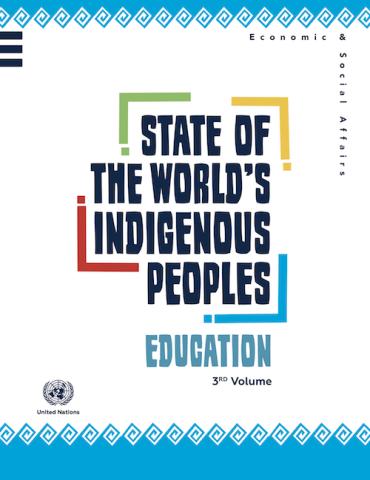
State of the World's Indigenous Peoples
Education
At its first session, the United Nations Permanent Forum on Indigenous Issues (UNPFII) requested the United Nations System to produce a report on the state of the world’s indigenous peoples (SOWIP)...
At its first session, the United Nations Permanent Forum on Indigenous Issues (UNPFII) requested the United Nations System to produce a report on the state of the world’s indigenous peoples (SOWIP)...
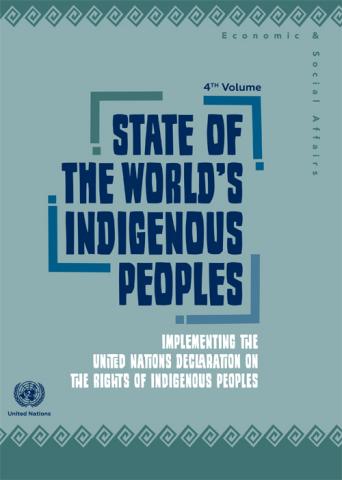
State of the World's Indigenous Peoples
Implementing the United Nations Declaration on the Rights of Indigenous Peoples
On 13 September 2007, the United Nations General Assembly adopted the United Nations Declaration on the Rights of Indigenous Peoples. It marked the culmination of decades of struggle among indigenous...
On 13 September 2007, the United Nations General Assembly adopted the United Nations Declaration on the Rights of Indigenous Peoples. It marked the culmination of decades of struggle among indigenous...
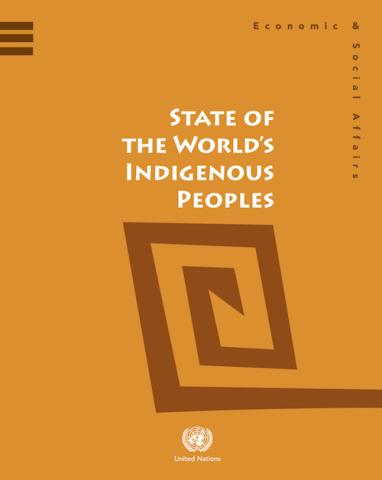
State of the World's Indigenous Peoples
While indigenous peoples make up around 370 million of the world’s population – some 5 per cent – they constitute around one-third of the world’s 900 million extremely poor rural people. Every day...
While indigenous peoples make up around 370 million of the world’s population – some 5 per cent – they constitute around one-third of the world’s 900 million extremely poor rural people. Every day...
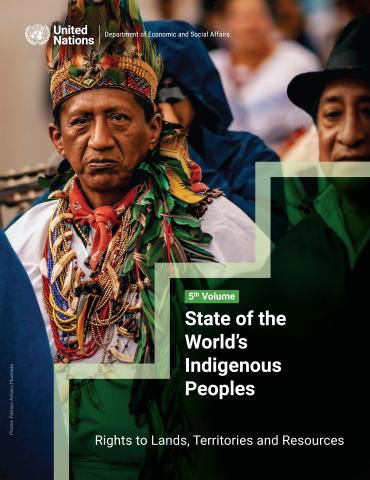
State of the World’s Indigenous Peoples
Rights to Lands, Territories and Resources
This publication offers a wide-ranging perspective on indigenous peoples’ rights to lands, territories and resources, examining legislation and agreements at the national and international level...
This publication offers a wide-ranging perspective on indigenous peoples’ rights to lands, territories and resources, examining legislation and agreements at the national and international level...
Advocating Change
Population, Empowerment, Development
No longer can policies on population or development fail to take the needs and rights of women and girls into consideration. Such policies have not succeeded, cannot succeed nor are they just or...
No longer can policies on population or development fail to take the needs and rights of women and girls into consideration. Such policies have not succeeded, cannot succeed nor are they just or...
New Role for Men, A
Partners for Women's Empowerment
Too often, the fight for women's empowerment is viewed as one for women to wage alone. This publication offers a discussion on the subject showing men to be essential partners in this struggle by...
Too often, the fight for women's empowerment is viewed as one for women to wage alone. This publication offers a discussion on the subject showing men to be essential partners in this struggle by...
Hopes and Realities
Closing the Gap Between Women's Aspirations and their Reproductive Experiences
Narrowing the gap between women's aspirations and their reproductive experiences will benefit both women and society. This publication offers a discussion in such areas as: poverty and inequality...
Narrowing the gap between women's aspirations and their reproductive experiences will benefit both women and society. This publication offers a discussion in such areas as: poverty and inequality...
Food for the Future
Women, Population and Food Security
The challenge of the 21st century is to feed a world of between 8 and 10 billion people. Only the full involvement of women as equal partners can guarantee success. This publication offers a...
The challenge of the 21st century is to feed a world of between 8 and 10 billion people. Only the full involvement of women as equal partners can guarantee success. This publication offers a...
Population and Sustainable Development
Five Years After Rio
This publication takes a look at population and sustainable development five years after the United Nations Conference on Environment and Development (UNCED). It discusses such areas as new visions...
This publication takes a look at population and sustainable development five years after the United Nations Conference on Environment and Development (UNCED). It discusses such areas as new visions...
Population in the 21st Century
UNFPA and Agenda 21
Agenda 21, the United Nations Programme of Action from the Rio Conference, notes in Chapter 5 that demographic trends and factors and sustainable development have a synergistic relationship. This...
Agenda 21, the United Nations Programme of Action from the Rio Conference, notes in Chapter 5 that demographic trends and factors and sustainable development have a synergistic relationship. This...
